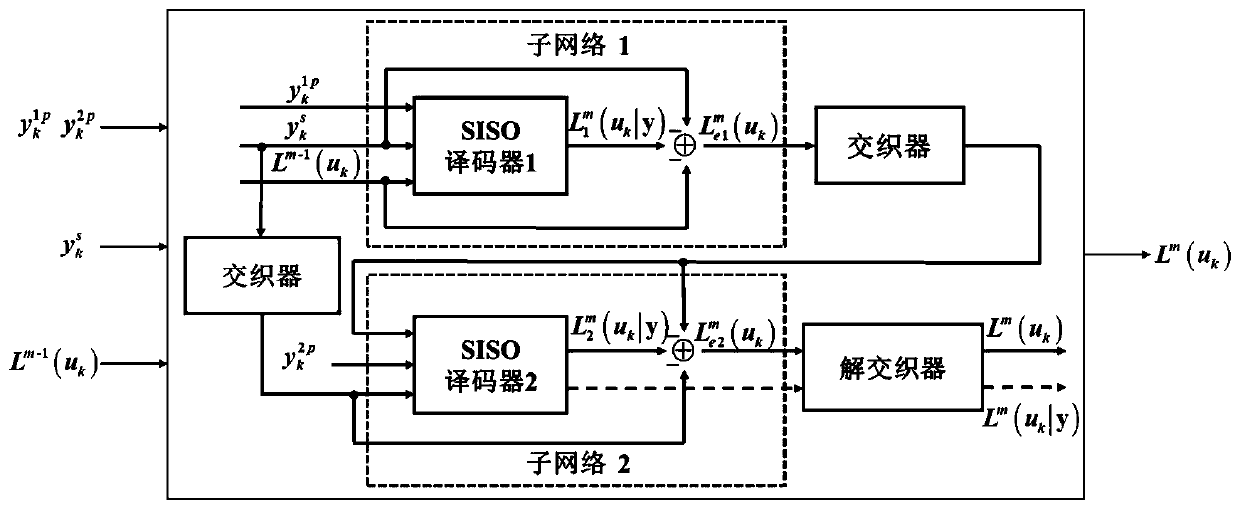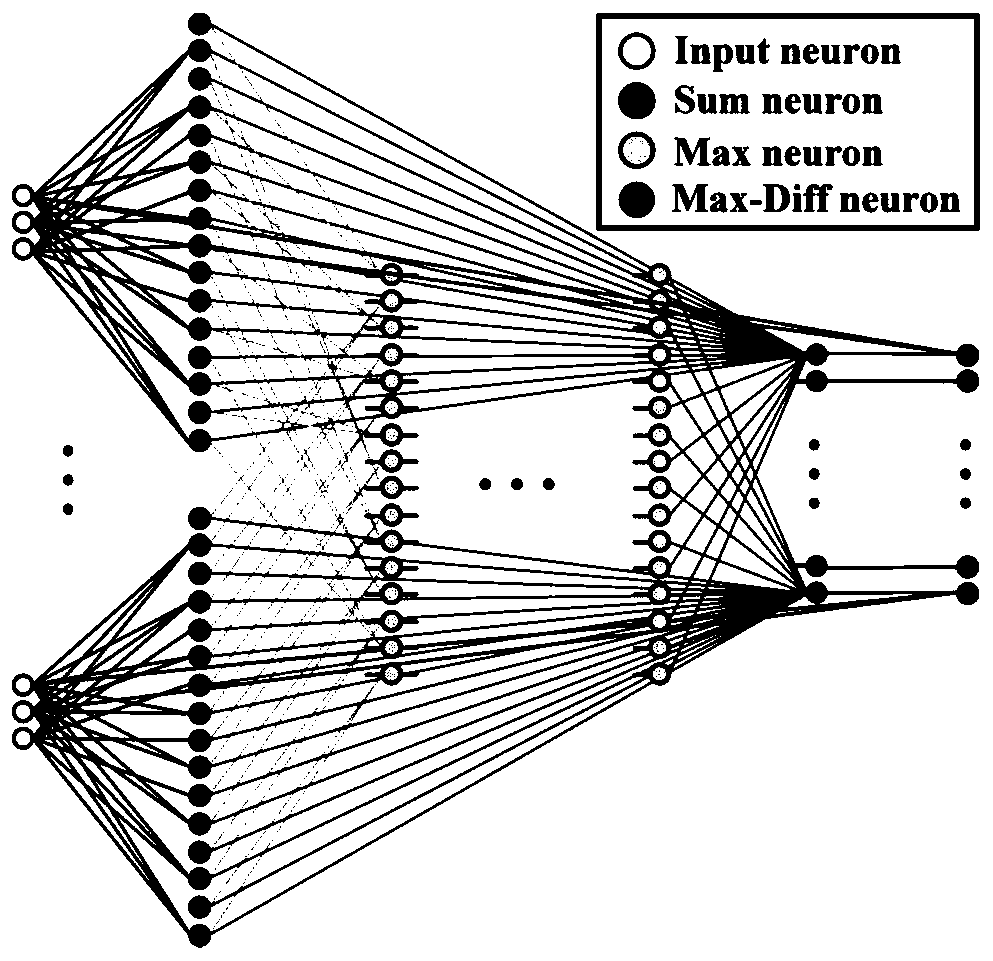Model-driven Turbo code deep learning decoding method
A model-driven, deep learning technique applied in the field of wireless communication
- Summary
- Abstract
- Description
- Claims
- Application Information
AI Technical Summary
Problems solved by technology
Method used
Image
Examples
Embodiment Construction
[0034] Below in conjunction with accompanying drawing, technical scheme of the present invention is described in further detail:
[0035] A kind of model-driven Turbo code deep learning decoding method of the present invention comprises the following steps:
[0036] (1) Expand the Turbo code iterative decoding structure into a "flat" structure: treat each iteration in the Turbo code iterative decoding structure as an independent unit, so that the original 3 iterations of the Turbo code decoding The structure can be expanded into three independent units, where the output of the mth unit corresponds to the prior information of the information bits calculated in the mth iteration in the original Turbo iterative decoding structure, m=1,2, and the output of the third unit Output the logarithmic likelihood ratio of the posterior probability corresponding to the information bit calculated in the third iteration in the original Turbo iterative decoding structure, and connect these thr...
PUM
 Login to View More
Login to View More Abstract
Description
Claims
Application Information
 Login to View More
Login to View More - R&D
- Intellectual Property
- Life Sciences
- Materials
- Tech Scout
- Unparalleled Data Quality
- Higher Quality Content
- 60% Fewer Hallucinations
Browse by: Latest US Patents, China's latest patents, Technical Efficacy Thesaurus, Application Domain, Technology Topic, Popular Technical Reports.
© 2025 PatSnap. All rights reserved.Legal|Privacy policy|Modern Slavery Act Transparency Statement|Sitemap|About US| Contact US: help@patsnap.com



